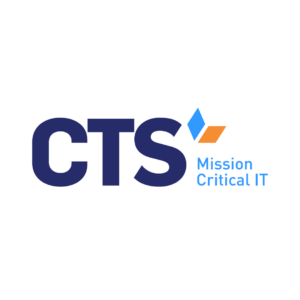by Guest Author
 By Sachin Gujral, CTS Founder & CEO
By Sachin Gujral, CTS Founder & CEO
The digital revolution has transformed educational landscapes, introducing innovative tools and platforms that enrich learning experiences. However, this transformation brings forth complex challenges in IT infrastructure and cybersecurity, particularly in the education sector. While some issues receive widespread attention, several critical aspects remain under-discussed, undermining the effectiveness and security of educational IT systems.
Data Privacy for Minors
Educational institutions, as custodians of minors’ sensitive information, must go beyond legal compliance like COPPA, the Children’s Online Privacy Protection rule, to ensure data privacy. This responsibility starts with a culture of ethical stewardship, emphasizing privacy as both a moral and regulatory duty.
Technically securing this data involves comprehensive strategies. Key to this is the development of strong encryption protocols, providing essential defense by making data unreadable to unauthorized individuals, whether stored or in transit. However, encryption is just part of the solution. Implementing secure data storage practices is equally important, incorporating privacy-compliant cloud services and physical security measures to protect against unauthorized access and data breaches. This approach ensures a robust defense mechanism for safeguarding student information.
Budget Constraints and Prioritization
Financial constraints significantly hinder the advancement of IT and cybersecurity in schools, particularly in the public and low-income sectors. Balancing affordability with the need for secure, high-quality IT systems requires strategic investment in areas promising significant security and functionality improvements. Prioritizing scalable, cost-effective solutions like cloud-based services can enhance data security and adapt to changing needs. Additionally, adopting open-source tools can extend IT capabilities affordably, provided they’re securely integrated with existing systems.
User Education and Awareness
Cybersecurity awareness is critical in educational environments, yet programs often don’t fully meet the diverse needs of students, teachers, and staff. Tailoring these programs is key to building a strong cybersecurity culture. For students, incorporating interactive and engaging cybersecurity education into the curriculum is essential. Simulating digital threats and discussing internet ethics can foster responsible digital citizenship. For teachers and staff, professional development workshops focused on data protection laws, data breach protocols, and secure technology use are vital. These approaches ensure each group receives relevant, impactful cybersecurity training.
Updating Aging Infrastructure and Addressing Compatibility Issues
The modernization of IT infrastructure in educational settings is imperative yet fraught with challenges, including security vulnerabilities and the difficulty of integrating new technologies with existing systems. A thorough assessment of the current IT landscape is vital, identifying security gaps and compatibility with new upgrades. A phased upgrade strategy, prioritizing critical security and compatibility needs, can facilitate a smoother transition to advanced technologies. Simultaneously, adopting flexible, scalable solutions like cloud-based services can enhance security and ease the integration of future technologies, keeping educational institutions at the forefront of technological adaptation.
Ensuring Accessibility and Inclusivity

Ensuring accessibility in digital resources is both a legal obligation and a moral duty, essential for inclusive education. Adherence to standards like the WCAG from the initial stages of IT projects ensures all users, including those with disabilities, can access and benefit from digital environments. This approach extends to cybersecurity, where measures must not obstruct accessibility. For example, instead of traditional CAPTCHAs, which can challenge visually impaired users, educational institutions should implement accessible yet secure verification methods. This commitment to accessibility and security fosters an inclusive digital educational environment.
Incident Response Planning
Despite data breaches and ransomware attacks becoming increasingly common across every industry, many educational institutions find themselves in reactive modes, scrambling to respond to IT emergencies due to a lack of preemptive planning and resource allocation. The consequence of this unpreparedness is not just operational disruption but also the potential loss of sensitive data, financial repercussions, and damage to institutional reputation.
A robust incident response plan is foundational to managing these crises effectively. This strategy begins with the development of a comprehensive IT incident response plan, tailored to the specific needs and vulnerabilities of the institution.
Key elements of an effective incident response plan include:
- Preparation: Developing policies and procedures for managing and mitigating cybersecurity incidents. This includes establishing an incident response team with clearly defined roles and responsibilities.
- Identification: Detecting and identifying incidents promptly. This involves monitoring systems and networks for signs of a security breach and establishing mechanisms for reporting incidents.
- Containment: Isolating affected systems to prevent the spread of the incident. Short-term containment may involve disconnecting infected devices, while long-term containment aims to secure the network and systems against further attack.
- Eradication: Removing the cause of the incident and any malware or unauthorized access from the system. This step often involves updating software, changing passwords, and fixing vulnerabilities.
- Recovery: Restoring and returning affected systems and devices to normal operation securely. This includes validating that systems are no longer compromised before bringing them back online.
- Lessons Learned: Reviewing and analyzing the incident to improve future response efforts. This involves documenting the incident’s details, what was done to respond, what worked well, and what could be improved. This step is crucial for updating the incident response plan and enhancing security measures.
- Communication: Maintaining clear and effective communication throughout the incident response process. This includes internal communication within the response team and external communication with stakeholders, possibly including public relations efforts if the incident is made public.
Balancing Security with Usability
Achieving an optimal balance between security and usability is a must, as overly stringent security protocols can impede educational processes, while lax security can leave institutions vulnerable to cyber threats. This balance is not static; it demands the design of IT policies and systems that both support learning objectives and protect against evolving threats.
Integrative Approach to Policy Design
IT policies should be crafted with an understanding of educational workflows, ensuring that security measures do not disrupt the learning experience. This involves consulting with educators to understand their needs and incorporating their feedback into the design of IT systems and policies. For instance, access controls should be stringent enough to protect sensitive data but flexible enough to allow educators and students to access the information and tools they need without unnecessary hurdles.
User-Centric Security Solutions
Security solutions should be selected and configured with the end-user in mind. This means deploying technologies that are not only effective in thwarting cyber threats but also intuitive for users. For example, implementing single sign-on (SSO) can reduce password fatigue and minimize the risk of password-related breaches, while making it easier for users to access multiple systems.
Leveraging Educational Technology Advancements
Advancements in educational technology offer new opportunities to enhance both security and usability. For instance, adaptive authentication methods can provide stronger security for more sensitive applications while maintaining ease of access for less critical systems. Similarly, cloud-based educational resources can offer secure, scalable access to learning materials from any device, supporting remote learning without compromising security.
Vetting Third-party Vendors and Data Sharing
Educational institutions increasingly rely on third-party platforms for learning management systems (LMS), online resources, and many other educational tools. This reliance, while expanding the horizons of educational possibilities, introduces significant security considerations that must be carefully managed.
Establishing Criteria for Vendor Selection
These criteria should encompass not only the functionality and usability of the platforms but also their compliance with industry-standard cybersecurity practices. Key considerations include the vendor’s history of data breaches, their data encryption standards, and their policies on data ownership and access. Vendors should demonstrate a clear commitment to adhering to educational data privacy laws, such as FERPA in the United States, which governs the protection of student education records.
Conducting Thorough Security Assessments
Before entering into agreements with third-party vendors, educational institutions should conduct thorough security assessments. This might involve a detailed review of the vendor’s security certifications, such as ISO 27001, which indicates that the vendor follows international best practices in information security management. Assessments can also include penetration testing or requesting a third-party security audit of the vendor’s systems. These assessments help identify potential vulnerabilities and ensure that the vendor’s security measures are robust enough to protect sensitive educational data.
Understanding Data Sharing Implications
A critical aspect of vetting third-party vendors is understanding the implications of data sharing. Institutions must have a clear picture of what data will be shared with the vendor, how it will be used, and who will have access to it. It’s essential to ensure that data sharing agreements strictly limit the use of educational data to the purposes for which it was intended and that vendors do not have the ability to share or sell sensitive information without explicit consent.
Maximizing Educational Technology through E-Rate
In the quest to enhance IT infrastructure and cybersecurity within the educational sector, the E-Rate program emerges as a critical financial lifeline, especially for institutions grappling with budget constraints. This program, poised to potentially include cybersecurity funding, represents a significant opportunity for schools and libraries to access telecommunication tools and technology at discounted rates, ranging from 20% to 90%. Charter Technology Solutions (CTS) stands at the forefront as an experienced E-Rate vendor, having facilitated over $13.5 million in funding awards across 577 E-Rate awards for more than 58 eligible schools. CTS’s expertise in navigating E-Rate’s complexities ensures that educational institutions not only secure essential technology but also strategically align these tools with their unique educational goals, thereby optimizing success and fostering innovation within the constraints of their budgets.
Empowering the Education Sector with Expertise
Addressing these under-discussed aspects requires a strategic approach that combines technical expertise with an understanding of the unique needs of the education sector. For schools looking to overcome these challenges effectively, partnering with a dedicated IT and cybersecurity provider can offer the support and solutions needed to enhance educational technology and safeguard against cyber threats. Charter Technology Solutions (CTS) specializes in managed IT services tailored to the education sector, providing comprehensive support that aligns with your institution’s mission and budgetary parameters. Engage with CTS to empower your educational institution with the robust IT infrastructure and cybersecurity defenses it deserves.
For more information on how CTS can enhance your institution’s IT and cybersecurity posture, visit our website or contact us directly to schedule a consultation.